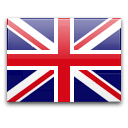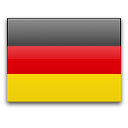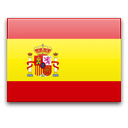No Products in the Cart
- Postpay
- 24-hour delivery
- Safe and reliable shopping
Learning to count and calculate in a playful way
We cannot start early enough. Learning to recognize numbers and calculating. Even if your child is not yet at school, it is already important to be busy with this. Consider, for example, setting the table. Ask regularly how much of everything is on the table while mating? Or how many plates do we need when the whole family is going to eat?
According to neuropsychologist Brian Buttersworth, counting and math are all about instinct. Looking back at the stamping of the tables myself and how I still apply it now has to do with what has "stuck". It's automatic. It's hard-wired right now, which means you don't really have to think about it. This has been hammered in by constant repetition both at home and at school. It is therefore true that the sooner we start making these connections, the easier it will be later on. Do you use a table and math game while learning? Then not only the stamping lingers, but also the playful learning with fun colors, for example in the form of a puzzle.
Age
Of course we don't expect you to go over the tables with your baby of a few months or ask a question about numbers. But from about a year onwards, words will stick. Just think back to the countless songs we were counting in. The more often we repeat it, the more naturally it lingers. It is therefore important to continue to encourage this. Keep it simple. Don't start higher than two numbers. Ask your toddler to give you one ball or two blocks. Interpretation and imitation are important in this phase.
From the age of two, recognizing and arranging colors and shapes becomes a lot more important. Think of a game of shapes. This can be in combination with numbers, but can also be done alone form. When forming game, ask your little one to place 4 blue shapes. Here you name the colors and the number. The great thing about this age is that they often don't realize what it all means. It is precisely because of the repetition of the numbers that they can name it.
Recognizing Milestones
when counting Between the ages of three and five you can recognize different highs. From a certain age, your toddler no longer adds everything up, but recognizes the number by itself. Think of four apples. Your toddler no longer counts these as 1, 2, 3 and 4. But would immediately indicate that it is four apples. But also remembering the sequence when counting to 10. Or adding up without using fingers.
Complex
Watch and listen to your child a lot. With a surprised and questioning face, you can assume that they don't get it. Don't try to push anymore. The brain is still developing enormously. In the beginning it is mainly important to learn that for example number 2 can be linked to different objects. 2 apples or 2 pears. This mainly to show that the number has little to do with the object, other than its number.
Keep communicating
Children imitate a lot, want to do the same as the parents. Make use of this. Talk and repeat a lot to your little one. You can easily apply this with all actions in daily life. Name the things you do, the number of cartons of milk you put in the shopping basket. Nice to test is to say just before the fruit that you need four apples. Then ask as soon as you get to the apples how many you need again. And let your toddler help with counting this. This also gives an important and involved feeling when shopping.







